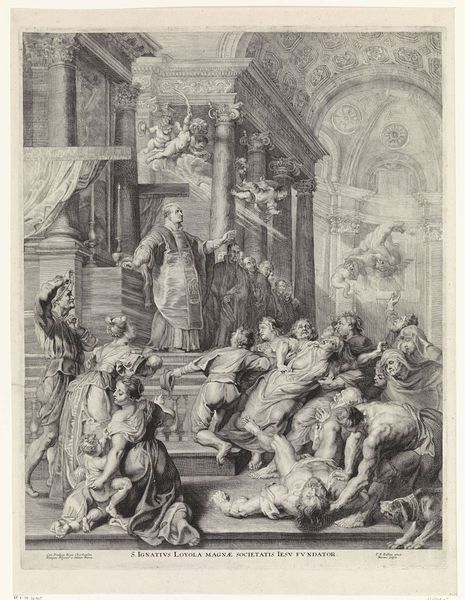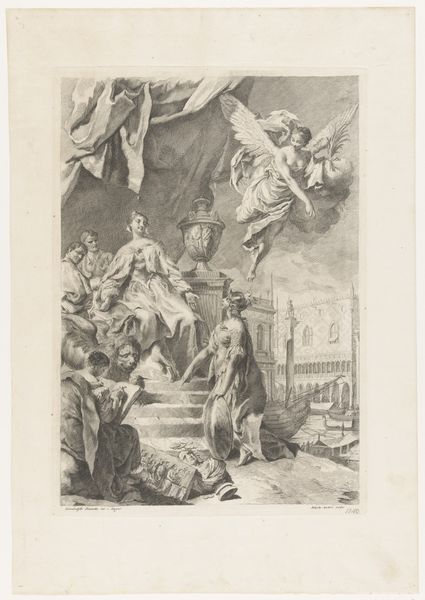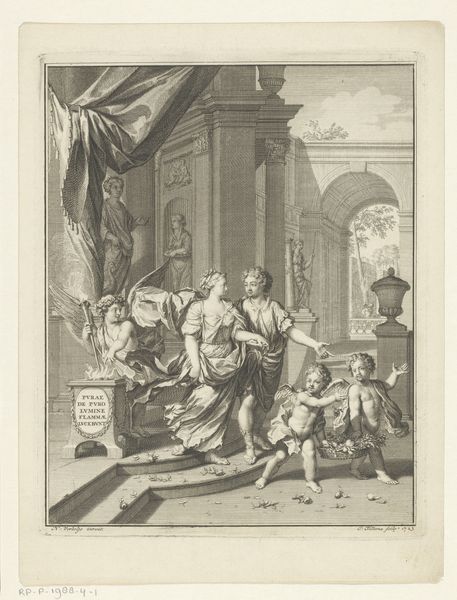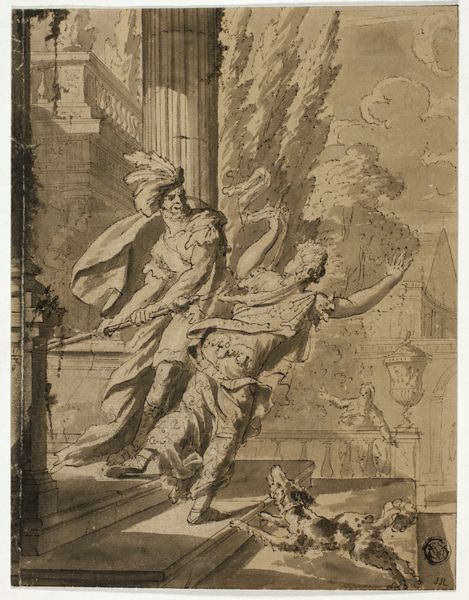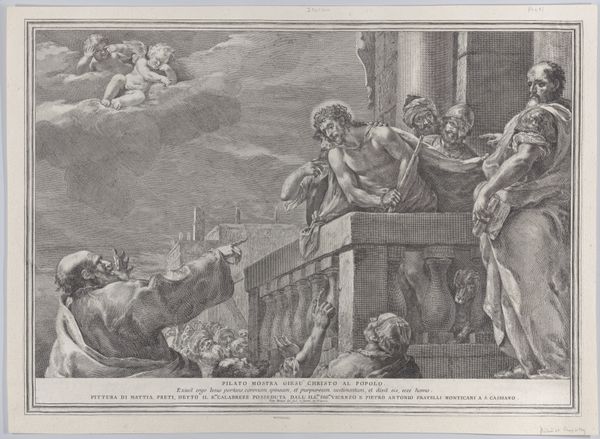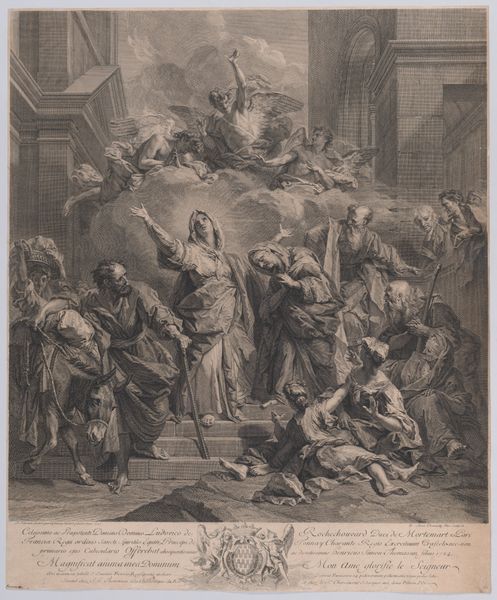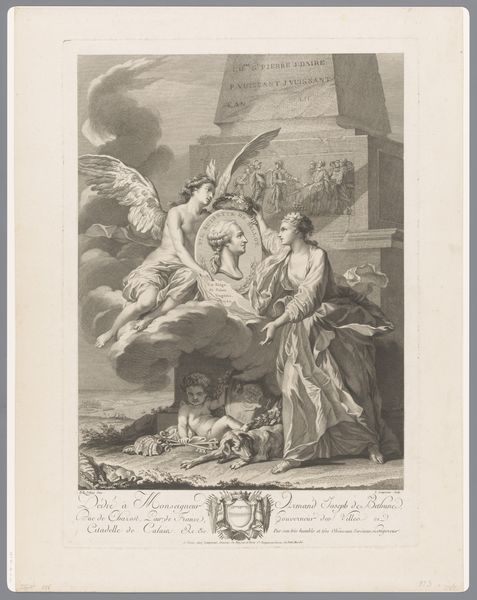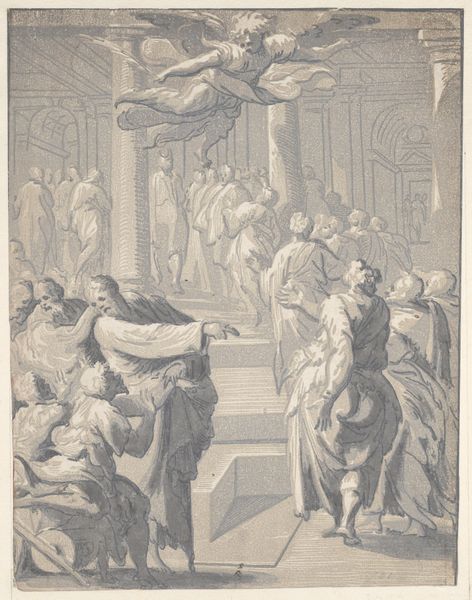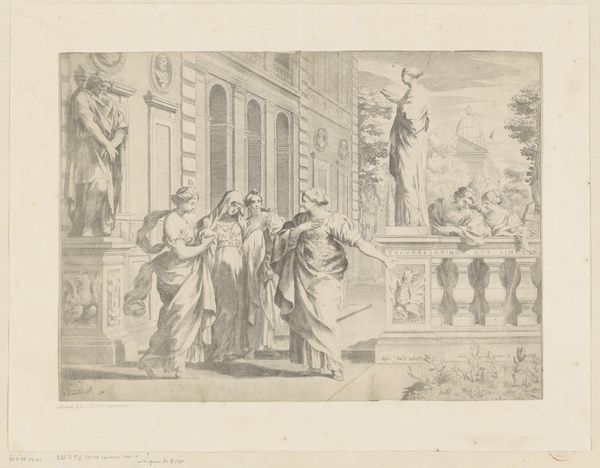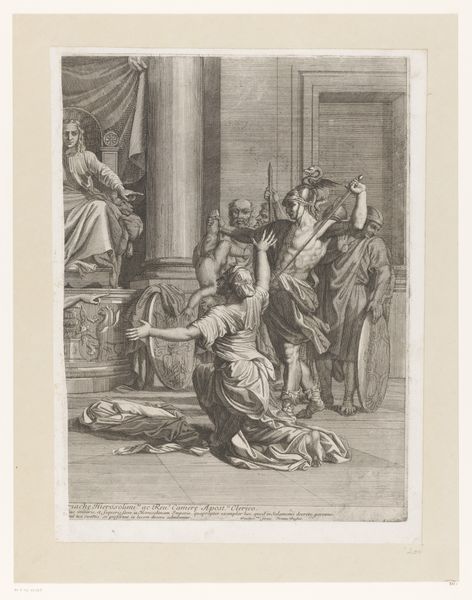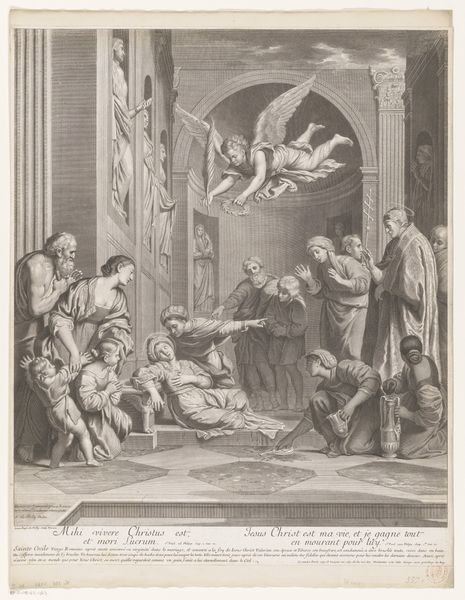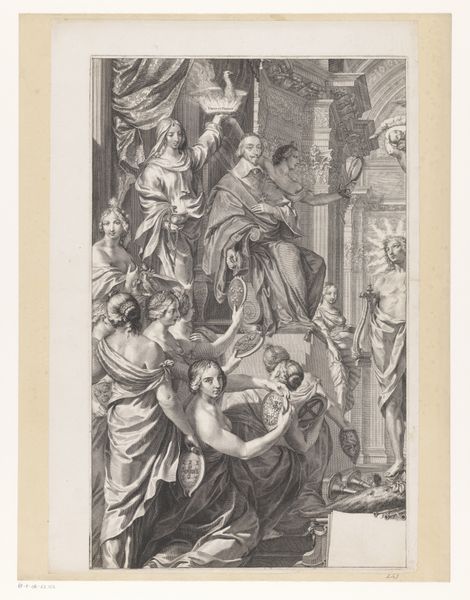
Bezoek van aartshertog Maximiliaan van Oostenrijk aan de Heilige Stede 1705 - 1754
0:00
0:00
drawing, ink
#
drawing
#
narrative-art
#
baroque
#
figuration
#
ink
#
ink drawing experimentation
#
sketchbook drawing
#
history-painting
Dimensions: height 172 mm, width 155 mm
Copyright: Rijks Museum: Open Domain
Jacob de Wit made this drawing depicting the visit of Archduke Maximilian of Austria to the Heilige Stede. It’s undated, but was likely made in the first half of the 18th century. The artwork shows Maximilian kneeling in prayer, attended by other kneeling figures, with cherubic angels overhead. Maximilian’s visit to the Heilige Stede refers to a historical event in Amsterdam. In 1345, the story goes, a Eucharistic miracle occurred when a host, spat out by a dying man, could not be destroyed by fire. As historians, we can interpret this image as a testament to the power of religious institutions. It shows the fusion of religious and political authority in Dutch society, which was largely Protestant at the time, but with a Catholic minority. Images like this served as a reminder of the historical and spiritual significance of the site, reinforcing the power of Catholic institutions. If we want to understand the drawing better, we could study the history of Amsterdam, and of the Catholic Church in the Netherlands.
Comments
No comments
Be the first to comment and join the conversation on the ultimate creative platform.
